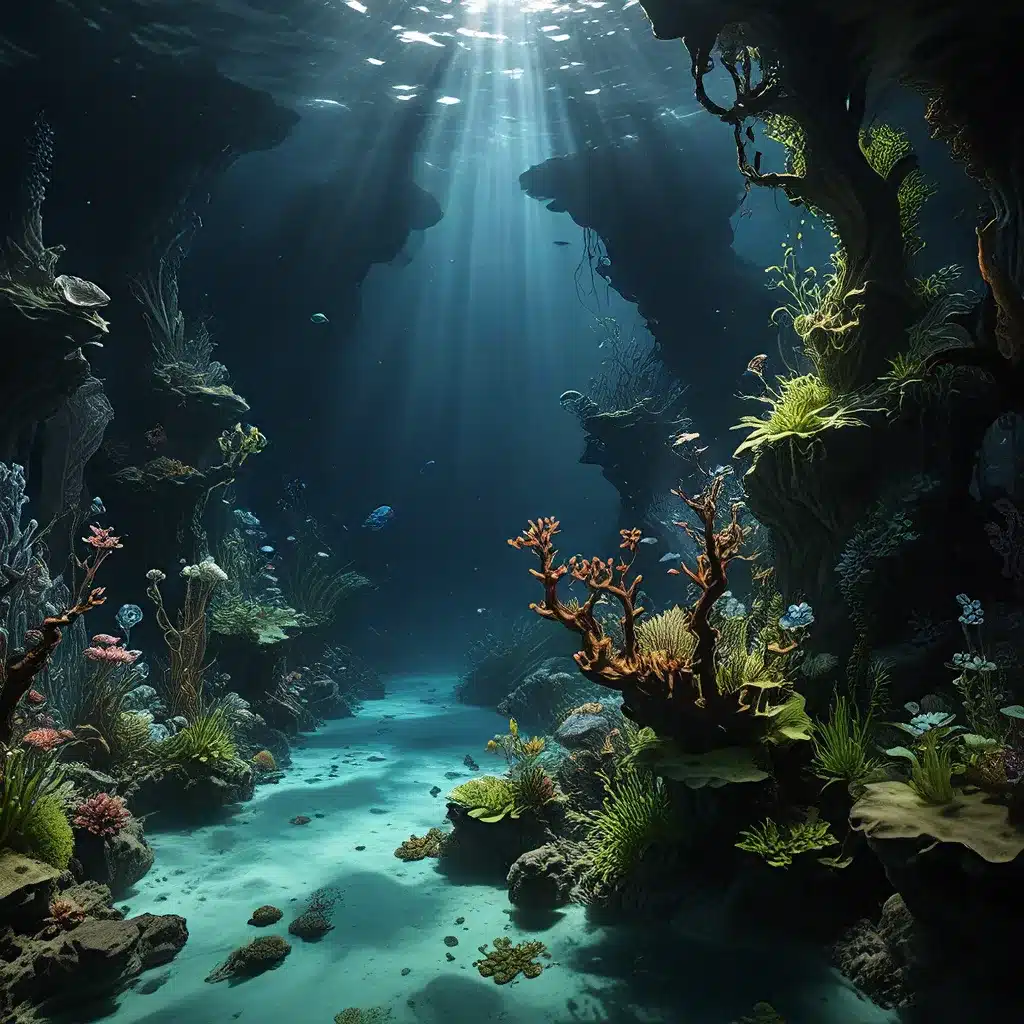
Unleashing the Artistry of Aquascaping
Aquascaping, the intricate art of designing and maintaining visually stunning underwater landscapes, has captivated the hearts and minds of aquarium enthusiasts worldwide. Much like a painter’s canvas or a sculptor’s medium, the aquarium becomes a liquid canvas, where aquascapers wield plants, rocks, and driftwood to create immersive, natural-looking habitats that not only delight the eye but also provide optimal living conditions for the aquatic inhabitants.
In this comprehensive guide, we’ll delve into the world of aquascaping, exploring the techniques, principles, and considerations that transform a simple glass box into an aquatic masterpiece. Whether you’re a seasoned aquarist or a newcomer to the hobby, this article will equip you with the knowledge and inspiration to craft your own liquid landscapes.
Mastering the Fundamentals of Aquascaping
Aquascaping is a multifaceted discipline that combines scientific understanding, artistic vision, and meticulous attention to detail. At its core, the art of aquascaping revolves around the careful arrangement and cultivation of aquatic plants, hardscape elements (such as rocks and driftwood), and the strategic placement of these components to create a harmonious and visually appealing underwater ecosystem.
One of the foundational principles of aquascaping is the Golden Ratio, a mathematical proportion revered for its natural beauty and balance. By applying this principle to the placement of plants, rocks, and other features, aquascapers can achieve a sense of cohesion and visual harmony within the aquarium. Additionally, the strategic use of negative space – the areas of the aquarium left unoccupied – can further enhance the overall aesthetic, creating a sense of depth and drawing the viewer’s eye to the focal points of the design.
Designing Diverse Aquatic Environments
The versatility of aquascaping allows aquarists to create a wide range of aquatic environments, each with its own unique character and appeal. From the lush, tropical rainforest-inspired layouts to the stark, minimalist Iwagumi style, the possibilities are endless. Each approach requires a deep understanding of the plants, their growth habits, and their compatibility with the desired aquarium conditions.
For instance, the biotope aquarium aims to recreate a specific natural ecosystem, such as a mountain stream or a mangrove swamp, by selecting appropriate plants, substrate, and even fish species native to that environment. This immersive approach not only delights the senses but also highlights the importance of preserving and protecting these delicate ecosystems.
Cultivating a Thriving Underwater Oasis
Maintaining a healthy and vibrant aquatic environment is crucial for the success of any aquascaping project. This involves a deep understanding of water chemistry, filtration systems, and the specific needs of the chosen plant and fish species. Regular water testing, nutrient supplementation, and careful plant trimming and pruning are all essential components of aquarium maintenance.
Moreover, the integration of natural elements, such as driftwood and rocks, can play a vital role in creating a balanced and sustainable ecosystem. These hardscape features not only enhance the visual appeal of the aquarium but also provide valuable hiding spots, breeding grounds, and surface area for beneficial bacteria to thrive.
Exploring the Frontiers of Aquascaping Innovation
As the aquascaping community continues to push the boundaries of creativity and technical excellence, new and innovative approaches have emerged. Vera Möller, a renowned artist and biologist, has pioneered the concept of “fictional hybrid” aquascapes, where imaginary plant and animal species coexist within meticulously crafted underwater environments.
These avant-garde aquascapes challenge the boundaries between the real and the imagined, inviting viewers to ponder the interplay between nature and human imagination. By blending scientific observation with artistic expression, Möller’s work encourages a deeper appreciation for the intricate beauty and fragility of aquatic ecosystems.
Cultivating a Sustainable Future
As the popularity of aquascaping continues to grow, so too does the imperative to embrace sustainable practices that safeguard the delicate balance of aquatic habitats. Responsible aquarists must consider the environmental impact of their hobby, from the sourcing of plants and fish to the management of waste and water usage.
Advancements in filtration technology, the use of LED lighting, and the adoption of closed-loop water systems have all contributed to a more eco-friendly approach to aquarium keeping. By prioritizing sustainability, aquascapers can ensure that their liquid landscapes not only enchant the senses but also play a role in preserving the natural wonders of the aquatic world.
Conclusion: Embracing the Aquatic Sublime
In the realm of aquascaping, the aquarium becomes a canvas for artistic expression, a stage for the interplay of nature and human ingenuity. By mastering the fundamentals of aquascaping and embracing the frontiers of innovation, aquarists can craft liquid landscapes that captivate the senses and inspire a deeper appreciation for the wonders of the aquatic world.
Whether you’re a seasoned aquarist or a newcomer to the hobby, the art of aquascaping offers a world of possibility, where the boundaries between the real and the imagined blur, and the aquatic sublime takes center stage.

